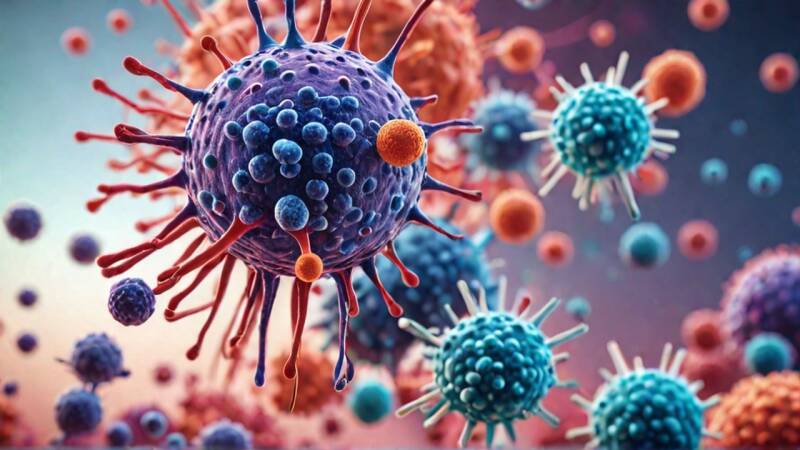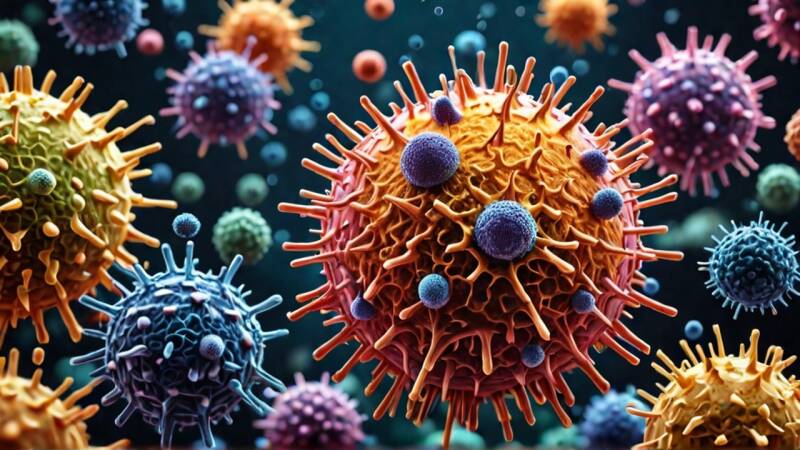"The future of infection care is not chemical. It is neurological."

Hidden Viral Antigens Create Chaos—NIS Alone Restores Order
Modern healthcare often treats viruses as if they are simple, singular enemies. But the truth is far more complex, far more fascinating—and far more dangerous. Viruses do not invade the human organism with one uniform shape, behavior, or biological signature. Instead, they enter as an ever-evolving spectrum of antigens, each presenting unique challenges to the immune system and generating symptom profiles that can vary dramatically from one individual to the next.
Understanding this diversity is not merely academic. It is essential to grasping why so many therapies fail… and why the Neurological Integration System (🧠NIS) stands alone as the only healthcare system capable of detecting and eliminating every viral variant at the speed and accuracy required to restore optimal function.
The Viral Antigen Landscape: A Hidden Multitude
Every virus carries antigens—molecular signatures the immune system uses to identify a threat. But viruses are masters of survival, and each viral family, subtype, and mutation presents its own suite of antigenic structures:
1. Structural Antigens
These include viral capsid proteins, envelope glycoproteins, and other surface markers.
They determine:
How the virus attaches to cells
What tissues it targets
How aggressively it replicates
This is why certain viruses prefer the respiratory system, while others prefer the nervous system, liver, or blood.
2. Non-Structural Antigens
These internal viral proteins appear after infection, influencing how the virus:
Hijacks cellular machinery
Evades immune surveillance
Interferes with metabolic pathways
These antigens often trigger delayed or chronic symptoms.
3. Mutation-Generated Antigens
RNA viruses—such as influenza, coronaviruses, enteroviruses, and retroviruses—constantly mutate.
New antigens appear rapidly, creating new symptom presentations, new inflammatory cascades, and new neurological consequences.
This is why two people exposed to the “same” virus can have completely different outcomes.
4. Fragmented or Residual Antigens
Even after the active virus is cleared, the body may retain:
Viral fragments
Protein remnants
Defective particles
Non-replicating antigenic debris
These fragments alone can:
Sustain chronic inflammation
Trigger autoimmune misfires
Create persistent fatigue
Disrupt neurological communication
This is one of the most overlooked drivers of chronic, unexplained symptoms.
Why Symptoms Vary So Widely
If viruses were uniform, symptoms would be predictable. But because antigenic structures vary so widely, symptom clusters can appear in thousands of combinations.
1. Tissue Tropism
Different antigens allow viruses to target specific tissues:
Neurotropic viruses disrupt cognition, mood, balance, sleep, and motor function.
Cardiotropic viruses influence heart rhythm, vascular tone, and blood pressure.
Hepatotropic viruses alter detoxification, metabolism, and energy production.
Lymphotropic viruses interfere with immunity, swelling, fevers, and chronic fatigue.
2. Immune Response Differences
Antigen diversity determines:
Whether inflammation is silent or explosive
Whether symptoms are acute or chronic
Whether fatigue is mild or debilitating
Whether pain is diffuse or localized
3. Interaction With Existing Neurological Programs
If the brain’s automated control systems are already under strain, viral antigens amplify dysfunction exponentially.
Two people, one virus—yet completely different symptom maps.
This is why symptomatic treatment fails. The root is not the symptom.
The root is the disrupted neurological integration caused by the antigenic variant.
Why Conventional Approaches Fall Short
Despite technological advances, mainstream approaches still rely heavily on:
Symptom suppression
Anti-inflammatory drugs
Antivirals with limited scopes
Broad-spectrum immune stimulation
“Wait and see” strategies
But none of these methods can:
Identify the exact antigen
Pinpoint where communication has broken down
Restore neurological control
Recalibrate immune accuracy
Eliminate residual fragments
These are critical failures—because until the neurological system correctly identifies the antigen, dysfunction persists.
This is precisely why chronic viral issues, post-viral syndromes, long-term fatigue patterns, and “mysterious” immune problems are rampant today.
NIS: The Only System Designed to Identify and Eliminate Every Viral Variant at the Velocity of Light
The Neurological Integration System (🧠NIS) is the only healthcare methodology in the modern world that works directly at the level of the brain’s control center—the central hub that governs immunity, inflammation, tissue repair, and every automated biological process necessary for survival.
How NIS Achieves What No Other System Can
1. Direct Communication With the Brain
NIS evaluates whether the brain can accurately recognize the antigenic signature of a viral variant—structural, non-structural, mutated, or fragmented. If the brain cannot see it, the immune system cannot eliminate it.
2. Re-establishing Correct Neurological Programs
Once the mismatch is identified, NIS reconnects the brain’s recognition pathways, restoring:
Accurate immune targeting
Precision inflammatory responses
Optimal tissue defense
Correct metabolic coordination
3. Eradicating Viral Antigens at Unprecedented Speed
Because NIS works through the brain’s own operating system, corrections occur at:
The velocity of neuronal conduction
With total specificity
With zero side effects
This allows the body to clear viral antigens—active or residual—within 24–48 hours, a capability unmatched by any other healthcare system.
4. Addressing All Variants, All Families, All Mutations
NIS does not care:
What the virus is called
How much it has mutated
What symptoms it is producing
Whether it’s chronic or acute
Whether remnants linger undetected
If the antigen exists, NIS can identify and eliminate it by restoring the brain’s innate processing—not by overriding the body, but by empowering it.
The Conclusion: Viral Antigens Aren’t the Problem—Neurological Misinformation Is
The breathtaking diversity of viral antigens explains why symptoms vary so widely, why chronic post-viral conditions are widespread, and why standard treatments often produce inconsistent results.
But diversity is not the enemy.
Disconnection is.
When the brain no longer recognizes the antigen, symptoms persist, inflammation lingers, and the organism struggles.
NIS is the only system that:
Identifies the antigenic mismatch
Reestablishes accurate neurological control
Mobilizes the immune system with perfect precision
Eliminates viral antigens at the speed of light
Restores the body’s innate capacity to heal.
"In a modern world battling constant viral evolution, NIS stands alone—timeless, unparalleled, and clinically unmatched."
